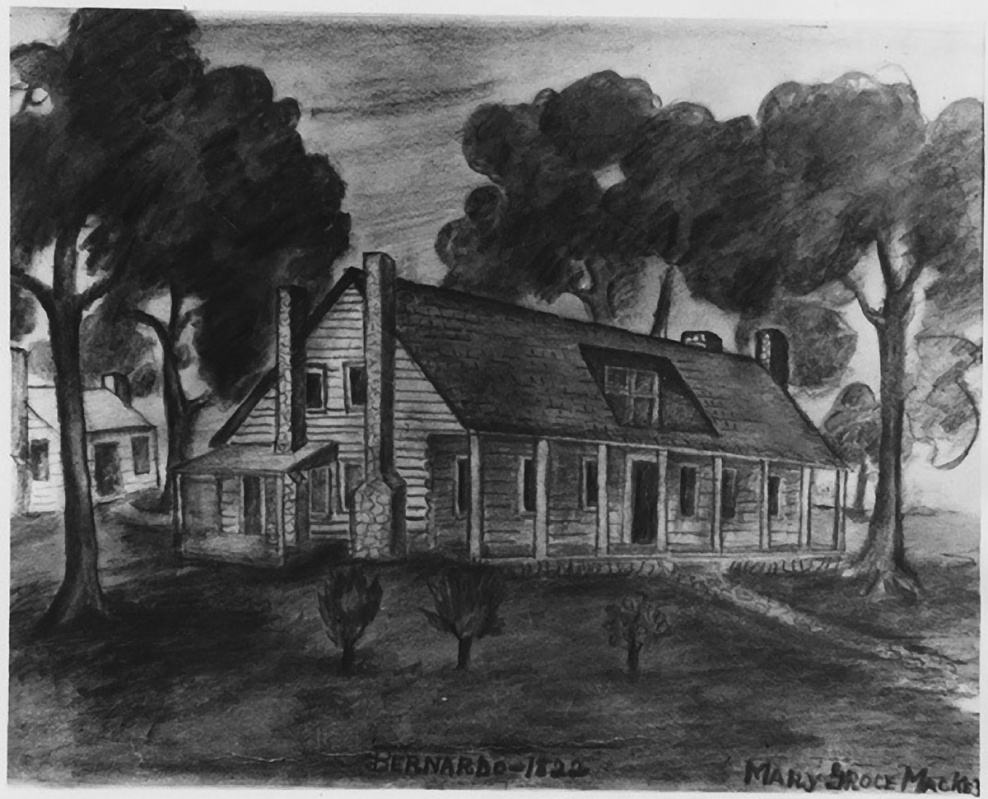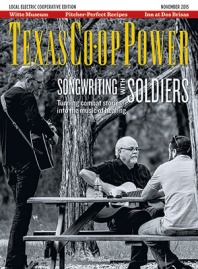History seeps from the soil at the site of historic Bernardo Plantation, where archaeologists have uncovered artifacts that tell a story from the years before Texas won independence from Mexico. In this prairie pasture near Hempstead, a stately house once stood on a hill overlooking the Brazos River. This building served as homestead of Jared E. Groce II, a wealthy planter from Virginia who arrived in Texas in 1822 to join Stephen F. Austin as one of the Old Three Hundred. Bernardo was the first and largest plantation in the Republic of Texas, growing and ginning cotton until the Civil War.
Austin’s first settlers arrived in 1821 to colonize this area of East Texas. When Groce learned of plans for the new Texas colony, he and son Leonard organized his family and 90 slaves for the trip. They loaded 50 wagons with farm implements, tools, seeds, sugar, coffee, tea and salt, along with bolts of cotton and wool cloth. This wagon train also included a herd of cattle, horses and mules and carried portable pontoon bridges to facilitate river crossings.
Groce’s assets qualified him to receive 10 leagues of land (44,280 acres) from Mexico. On the east bank of the river, he staked a claim where the Coushatta Trace crossed the Brazos and set his slaves to work building cabins. Skilled craftsmen constructed a 30-by-30-foot cabin of cottonwood logs for the landowner’s first residence, and by the end of 1822, they had completed a more elaborate house in a nearby grove of walnut trees.
Groce named his plantation “Bernardo,” presumably in honor of former Spanish governor Bernardo de Gálvez. Groce’s first cotton crop failed, but a subsequent crop proved successful and was the precursor of a boom in cotton farming, which contributed mightily to the Texas economy for decades. A dairy and a small house for the resident doctor were built, and the original cabin was furnished with six beds to accommodate visitors. Bernardo quickly became a welcome stopping place for travelers.
Although he initially opposed the Texas Revolution, by 1836 Groce had changed his mind. He developed a close relationship with Sam Houston, as did sons Leonard and Jared III. Records show that Jared Groce II and his son Jared III were at Bernardo in April 1836. During that period, Bernardo’s main house and outbuildings were filled with Texans, mostly women and children, fleeing the Mexican Army during the Runaway Scrape.
Sam Houston set up a training camp for his army across the Brazos from Bernardo. On April 11, the Twin Sisters, two 6-pound cannons that were a gift to Texas from the people of Cincinnati, arrived at Bernardo. The Texian Army crossed the Brazos aboard the steamboat Yellow Stone and marched toward San Jacinto, where they would help set a new course for history on April 21, 1836. That same year, Jared Groce II died and was buried at Bernardo, but his son Leonard continued to operate the plantation until the end of the Civil War.
In 2009, archaeologists unearthed brick and sandstone fireplaces, nails, glass, ceramic shards, bullets, buttons and coins. The artifacts are on display at the Sam Houston Memorial Museum in Huntsville.
In his book Bernardo: Crossroads, Social Center and Agricultural Showcase of Early Texas, historian James V. Woodrick writes, “Three generations of Groces and their slaves lived on the plantation, and many remained in the area into the twentieth century. Literally hundreds of people living today have ancestors who were part of life at this fascinating and unique corner of Texas called Bernardo.”
——————–
Martha Deeringer, a member of Heart of Texas EC, lives near McGregor.


